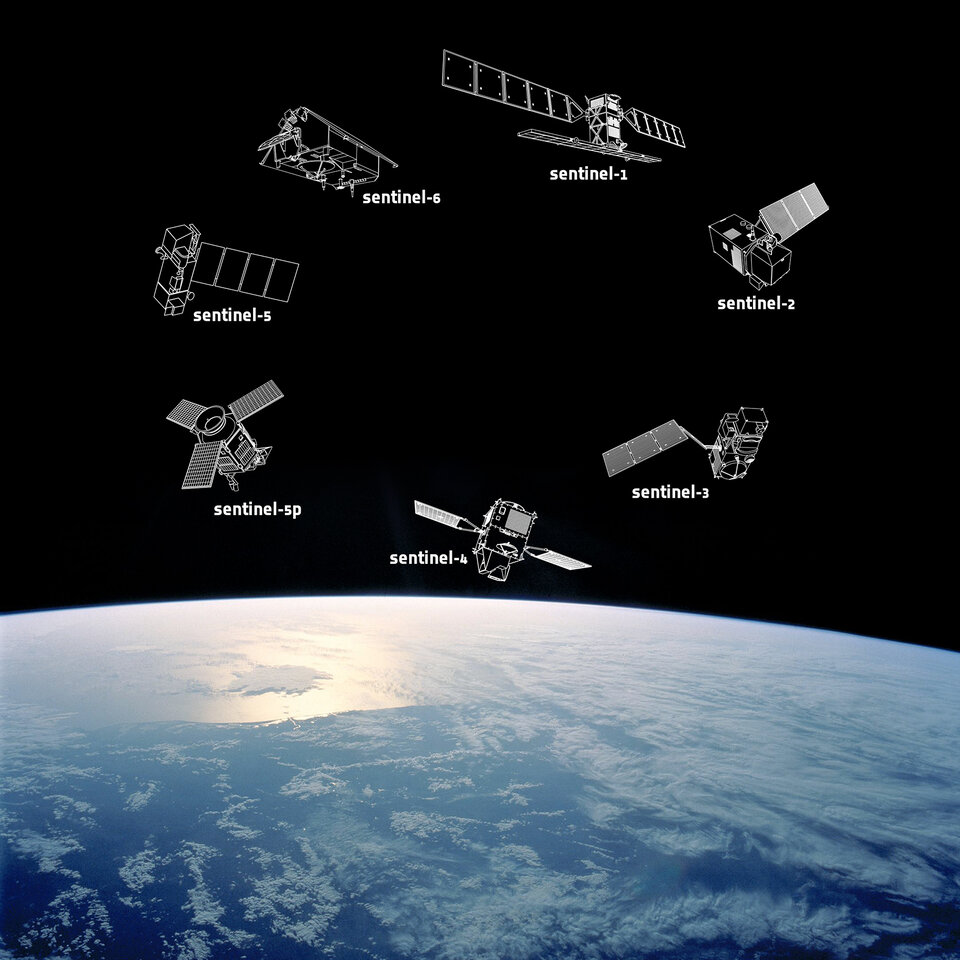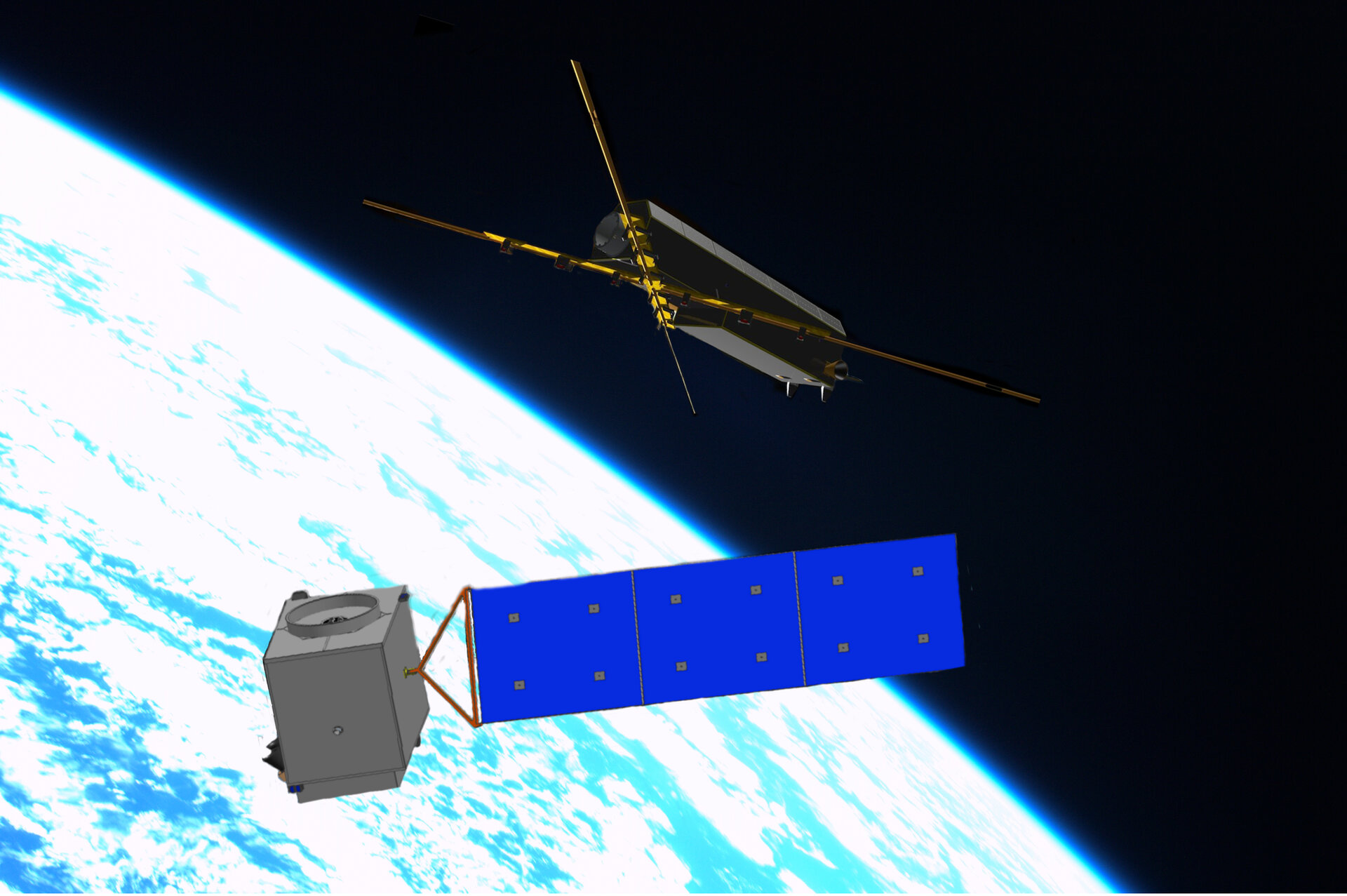Earth Observation for Energy
In the framework of its Space & Energy initiative ESA commissioned two studies to be carried out to increase the synergy between the Energy Sector (ES) and the Space sector and to assess how the space sector, and in particular Earth Observation (EO) programmes, can aid the ES with existing as well as new products. As such the needs of the Energy industry were charted and suitable EO applications were sought. The performed studies then focused on developing new EO mission concepts that are able to fulfil current and anticipated demands of the ES.
A thorough survey of the whole energy sector, including a workshop and end-user interviews, was performed to identify the most promising energy subsectors and space exploitation possibilities. Already available or planned EO products and missions, such as Copernicus and ADM-Aeolus, as well as non-EO approaches, i.e., ground-based information gathering and aerial surveys, can already address a large part of the Energy Sector’s needs. Insect swarms, for instance, which have an impact on biofuel production can already be monitored from space.

Another example are the upcoming Sentinel missions, which are part of the Copernicus programme, that will aid in identifying potential sites for solar or wind power generation. Transporting our fuels across the globe could also be made easier and more efficient by satellite monitoring and the detection of leaks would be almost instantaneous. However, a fair amount of unmet demands remained that underwent further analysis and in each study two EO concept missions were chosen for a full cost/benefit analysis.
Wind Resource Mission (WiRM)
In this study, wind energy has been identified to become the major renewable energy source of the future. Therefore it is important to support the further development of wind farms and provide near-real time data for existing sites. The WiRM concept proposes to use a scatterometer instrument on a satellite to measure wind over the sea like operational weather systems, but with a pencil-beam configuration, which can be used to retrieve the wind speed and direction with high precision for exact coastal mapping. A constellation of such satellites will also provide the much needed high frequency of observations. On a global scale the WiRM mission would be more cost-effective than just on the European scale, however, the myriad of possibilities that this mission could provide for not only the Energy Sector would definitely make it worth developing.
Hidden Aquifer Deep Earth Sounder (HADES)

The main application of the HADES mission concept is to reduce the cost of saline aquifer exploration by finding suitable carbon-capture-and-storage (CCS) sites more easily. HADES will make use of a Ground-Penetrating Radar (GPR) instrument that will be able to locate sub-surface aquifers over large areas independently of the roughness of the terrain.
As the implementation of comprehensive, international, global aerial surveys is unrealistic in the foreseeable future, HADES, therefore, is a much cheaper alternative for large or remote-area surveys.
There are some technical difficulties with the proposed observation technique that are to be consolidated before its feasibility can be confirmed. The fact remains that the EU provides substantial funding for CCS support, and major oil companies spend a substantial amount of money on R&D and geophysical surveys each year. If they can be persuaded to invest in HADES it would be a very viable mission with direct applications for the Energy Sector.
High-resolution Thermal Infra-Red (HiTIR)
The HiTIR (pronounced “heater”) mission focuses on quantifying the efficiency of thermal insulation of buildings from orbit for urban areas. The HiTIR mission will perform high-resolution thermal imaging of the Earth using a high-definition telescope. In contrast to aerial surveys, HiTIR will be able to perform large-scale Europe-wide observations to provide evidence for the need for insulation improvements on public as well as private buildings. As such this kind of mission is a good candidate for public funding as it could decrease the global CO2 emissions dramatically by addressing energy efficiency.
Gas Emission Mission (GEM)

The Gas Emission Mission (GEM) addresses the measurement of natural and man-made CH4 and CO2 surface emissions, focusing on monitoring a dedicated list of point targets. This includes power plants, combustion devices, coal mines, methane leaks, methane emissions from algae, etc. To do so a highly accurate spectral analyser with high spatial resolution needs to be developed and flown on a constellation of five Low-Earth Orbit (LEO) satellites.
Although CO2 emission monitoring is already highly regulated, especially in Europe, increasing scientific evidence suggests that it would still be of use to have an independent monitoring platform. Methane detection is far less widespread or regulated and GEM may create new opportunities for natural gas exploration assuming a high enough accuracy can be attained. As hydrocarbon exploitation involves many different actors in the economy, various stakeholders such as the European Commission, the Oil and Gas industry and other players in the Energy Sector may be interested in funding the GEM.
It is clear from these studies that the Space Sector can play a role in shaping the energy future of our planet. Global demands present some serious challenges through our limited fossil fuel resources, concerns about global warming by greenhouse gas emissions and other polluting substances, and the overall safety in energy production. The four aforementioned missions can each in their turn help to reduce our energy needs or decrease our carbon footprints on this planet. However, these studies also uncovered that concepts that are focused on a single sector, such as Energy, are difficult to justify and implement in the wider context. So for the proposed concept missions or other ideas to become viable projects a framework has to be found that involves the major players in the Energy sector including industrial partners, public bodies and product-providing companies. ESA and the space community, when designing future, multi-user missions, will then take the needs of the energy sector into account.





